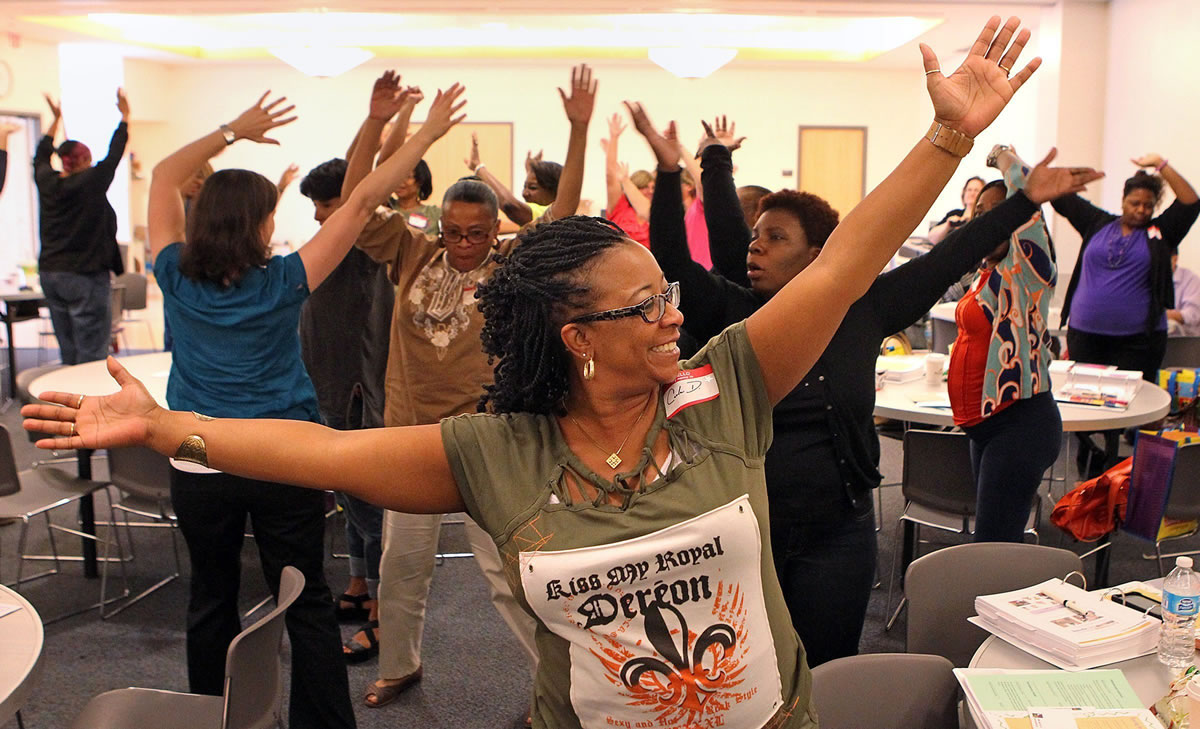ST. LOUIS — Preschool-style hand clapping, toe touching and hokey pokeying punctuated a conference room at the Center of Clayton, Mo., on a recent Saturday, although no kids were around. About 40 educators gathered for a new training program to help day-care centers reduce the childhood obesity rate.
The program, called Taking Steps to Healthy Success, supports several goals for day-care centers: nutritional meals and snacks, breast-feeding support, water availability, exercise and policies for limiting screen time.
With a $260,000 grant from the U.S. Centers for Disease Control and Prevention, Child Care Aware of Missouri recently launched the program and hope to train staff who oversee 90 day-care centers and 9,000 kids in Missouri this year. The employees from some of St. Louis’ largest day-care centers shared tips and ideas Saturday for encouraging health and fitness among their young charges. They will meet again several times throughout the year to follow the progress at their day-care centers.
The staff members, including directors, teachers and kitchen managers, will also talk about improving their own health to serve as better role models for the kids, said Beth Ann Lang of Child Care Aware.
Harriette Scates, director of the Daruby Early Learning Center in Cool Valley, Mo., has lost more than 65 pounds since January after changing her diet and exercise habits and wants her staff and students to follow her lead.
Her center introduces new foods every two weeks. Some of the kids had never tasted yogurt, Scates said. Now they ask for guacamole. The employees get creative by telling kids to kiss the food before they taste it. They give different names for food, incorporating preschool favorites like aliens and dinosaurs. Positive peer pressure helps — if one of the little leaders in the class tries something, others are going to follow. The cooks will tell kids to look for the surprise in their food, as in one case where they found black beans in their burritos for the first time, Scates said.
“It’s all about how you present it to them, it’s like an adventure,” she said. “At this age they’re so impressionable.”
Team effort needed
One in every eight American preschoolers is obese, although the rate seems to be on the decline after increasing from 2003 to 2008, according to a report earlier this month from the CDC.
Researchers attribute the decline in some states to changes in federal nutrition programs and fitness standards in early education. Higher rates of breast-feeding may also have helped. The national initiative Let’s Move and public health campaigns have drawn attention to the problem.
Still, the declines aren’t happening fast enough, health experts say. The problem isn’t just baby fat. Overweight or obese children are five times more likely to be obese when they grow up and are at higher risk for all the health problems that accompany obesity, including heart disease, diabetes and asthma.
“The problem is we have all gotten used to children being bigger as a norm, and it’s something we need to be aware of,” said Susan Horn, head of school for the Downtown Children’s Center. “We’re all accountable, and we need to work together.”
Working with this age group offers special challenges, educators said. Kids become dehydrated faster than adults. But they might think they’re hungry when they actually need water. Some of the participating day-care centers have water dispensers, others have drinking fountains. They should all have water available at all times, according to health guidelines.
With fitness activities, it might be harder for a 2- or 3-year-old to march around while singing and clapping. The activities are easier for little kids if they are first performed while sitting down.
“It’s a very short window between birth and kindergarten,” Horn said. “They will learn healthy habits during this crucial period.”



